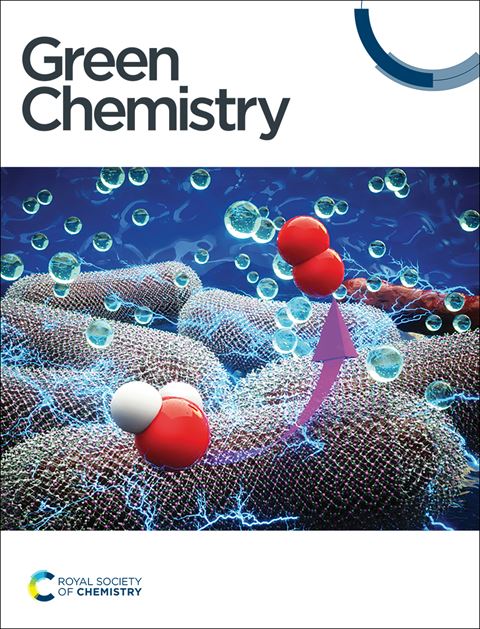碳化聚合物点作为电解质添加剂抑制锌枝晶生长、腐蚀和锌离子电池中的HER
IF 9.3
1区 化学
Q1 CHEMISTRY, MULTIDISCIPLINARY
引用次数: 0
摘要
锌金属阳极中不可控的锌枝晶和界面寄生副反应的存在,极大地限制了其在水相锌离子电池中的发展。在此,引入带有极性基团的碳化聚合物点(CPDs)来降低水活性并限制水诱导的副反应。此外,cpd上的官能团作为亲锌位点调节Zn2+通量,诱导Zn沿(002)面均匀沉积。结果表明,含有CPDs的锌对称电池具有令人满意的循环寿命,超过1350小时(1 mA cm - 2, 1 mA h cm - 2),并具有出色的全电池性能。这项工作显示了CPDs作为水性ZIBs电解质添加剂的潜力。本文章由计算机程序翻译,如有差异,请以英文原文为准。
Carbonized polymer dots as electrolyte additives for suppressing Zn dendrite growth, corrosion, and the HER in Zn-ion batteries†
The existence of uncontrollable zinc (Zn) dendrites and interfacial parasitic side reactions in Zn metal anodes greatly limits their development in aqueous Zn-ion batteries (ZIBs). Herein, carbonized polymer dots (CPDs) with polar groups are introduced to reduce water activity and limit water-induced side reactions. Moreover, the functional groups on the CPDs work as zincophilic sites to regulate Zn2+ flux and induce uniform deposition of Zn along the (002) plane. As a result, Zn||Zn symmetric cells with an electrolyte including CPDs exhibit a satisfactory cycling life of over 1350 h (1 mA cm−2, 1 mA h cm−2), together with excellent performance in full cells. This work shows promising potential for CPDs used as electrolyte additives for aqueous ZIBs.
求助全文
通过发布文献求助,成功后即可免费获取论文全文。
去求助
来源期刊

Green Chemistry
化学-化学综合
CiteScore
16.10
自引率
7.10%
发文量
677
审稿时长
1.4 months
期刊介绍:
Green Chemistry is a journal that provides a unique forum for the publication of innovative research on the development of alternative green and sustainable technologies. The scope of Green Chemistry is based on the definition proposed by Anastas and Warner (Green Chemistry: Theory and Practice, P T Anastas and J C Warner, Oxford University Press, Oxford, 1998), which defines green chemistry as the utilisation of a set of principles that reduces or eliminates the use or generation of hazardous substances in the design, manufacture and application of chemical products. Green Chemistry aims to reduce the environmental impact of the chemical enterprise by developing a technology base that is inherently non-toxic to living things and the environment. The journal welcomes submissions on all aspects of research relating to this endeavor and publishes original and significant cutting-edge research that is likely to be of wide general appeal. For a work to be published, it must present a significant advance in green chemistry, including a comparison with existing methods and a demonstration of advantages over those methods.
 求助内容:
求助内容: 应助结果提醒方式:
应助结果提醒方式:


